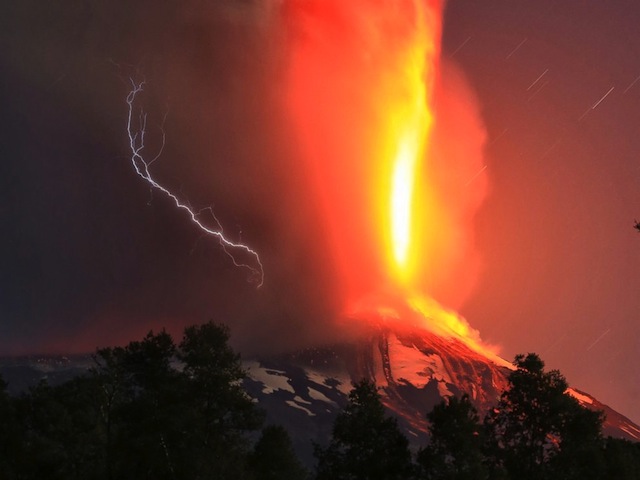
Chile's Villarica volcano erupts on March 3, 2015.
Fuego, Guatemala | Heard, Kerguelen Plateau | Lascar, Chile | Rinjani, Lombok Island (Indonesia) | Turrialba, Costa Rica.
Ongoing activity: Aira, Kyushu (Japan) | Bagana, Bougainville (Papua New Guinea) | Colima, Mexico | Colo, Sulawesi (Indonesia) | Cotopaxi, Ecuador | Dukono, Halmahera (Indonesia) | Karangetang, Siau Island (Indonesia) | Karymsky, Eastern Kamchatka (Russia) | Kilauea, Hawaiian Islands (USA) | Manam, Papua New Guinea | Nevado del Ruiz, Colombia | Piton de la Fournaise, Reunion Island (France) | Santa Maria, Guatemala | Sheveluch, Central Kamchatka (Russia) | Shishaldin, Fox Islands (USA) | Sinabung, Indonesia | Tungurahua, Ecuador | Ubinas, Peru.
New activity/unrest:Fuego, Guatemala
14.473°N, 90.88°W, Summit elev. 3763 m
INSIVUMEH reported that during 30 October-3 November explosions at Fuego generated ash plumes that rose 450-850 m above the crater and drifted as far as 10 km W and SW. Incandescent material was ejected 100 m high. Ashfall was reported in Panimache I and II (8 km SW), Morelia (9 km SW), Santa Sofía (12 km SW), and El Porvenir (8 km ENE) during 2-3 November.
Geologic summary: Volcán Fuego, one of Central America's most active volcanoes, is one of three large stratovolcanoes overlooking Guatemala's former capital, Antigua. The scarp of an older edifice, Meseta, lies between 3763-m-high Fuego and its twin volcano to the north, Acatenango. Construction of Meseta dates back to about 230,000 years and continued until the late Pleistocene or early Holocene. Collapse of Meseta may have produced the massive Escuintla debris-avalanche deposit, which extends about 50 km onto the Pacific coastal plain. Growth of the modern Fuego volcano followed, continuing the southward migration of volcanism that began at Acatenango. In contrast to the mostly andesitic Acatenango, eruptions at Fuego have become more mafic with time, and most historical activity has produced basaltic rocks. Frequent vigorous historical eruptions have been recorded since the onset of the Spanish era in 1524, and have produced major ashfalls, along with occasional pyroclastic flows and lava flows.
Heard, Kerguelen Plateau
53.106°S, 73.513°E, Summit elev. 2745 m
A plume from Heard was visible in a satellite image drifting SSW on 30 October.
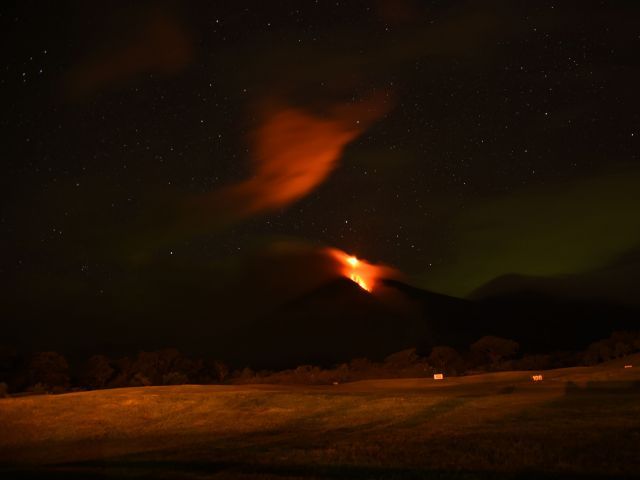
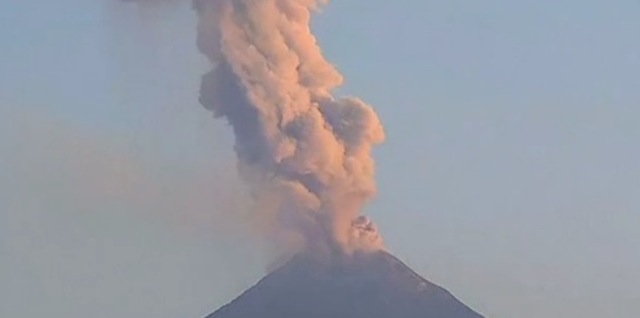

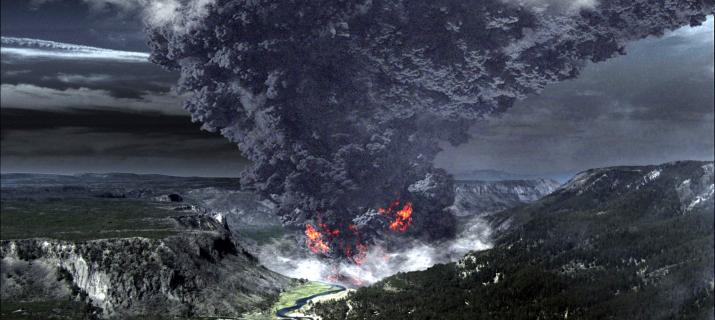
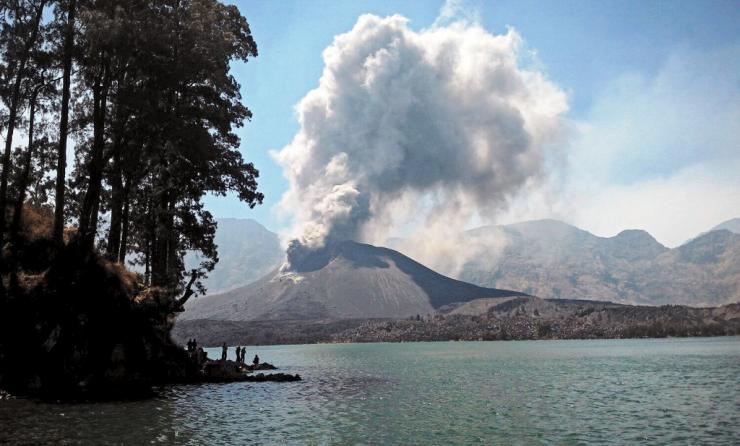
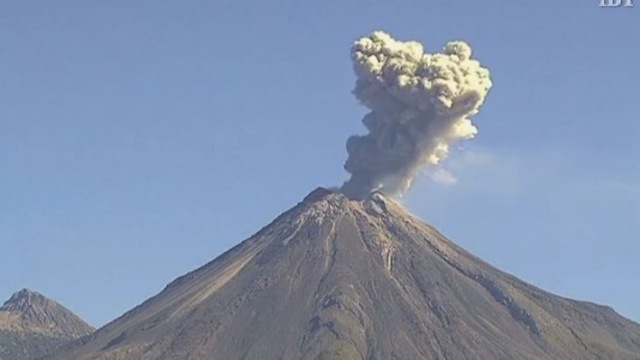

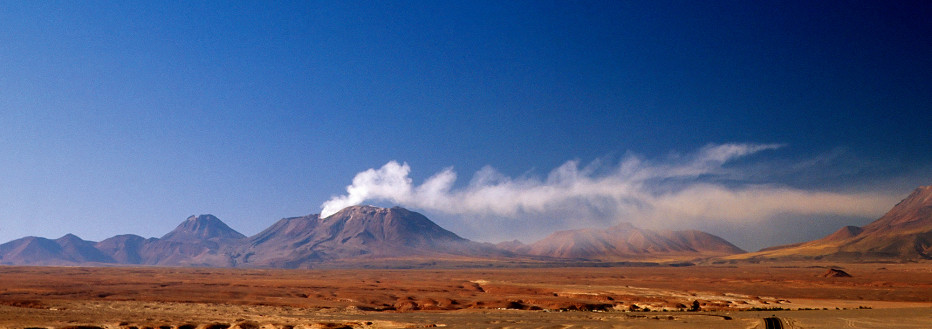
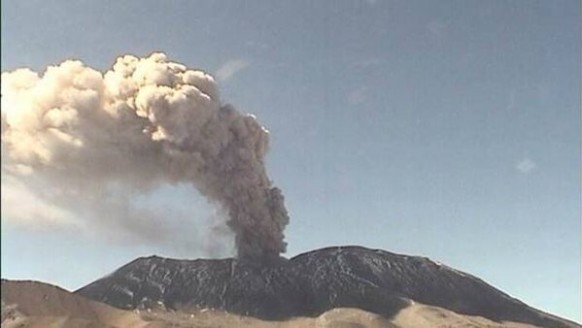
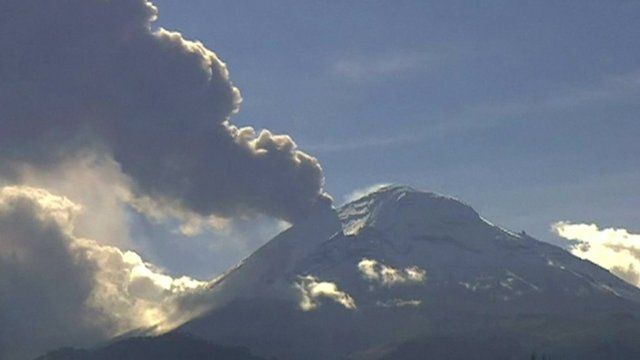
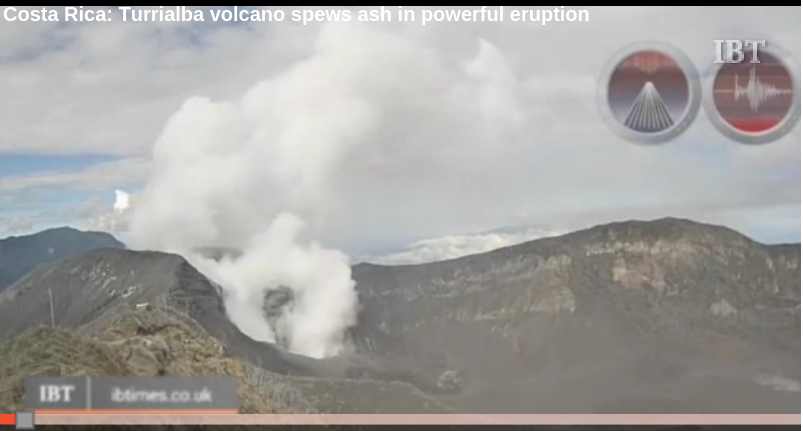



Comment: Video footage from someone on site in Antigua, Guatemala: